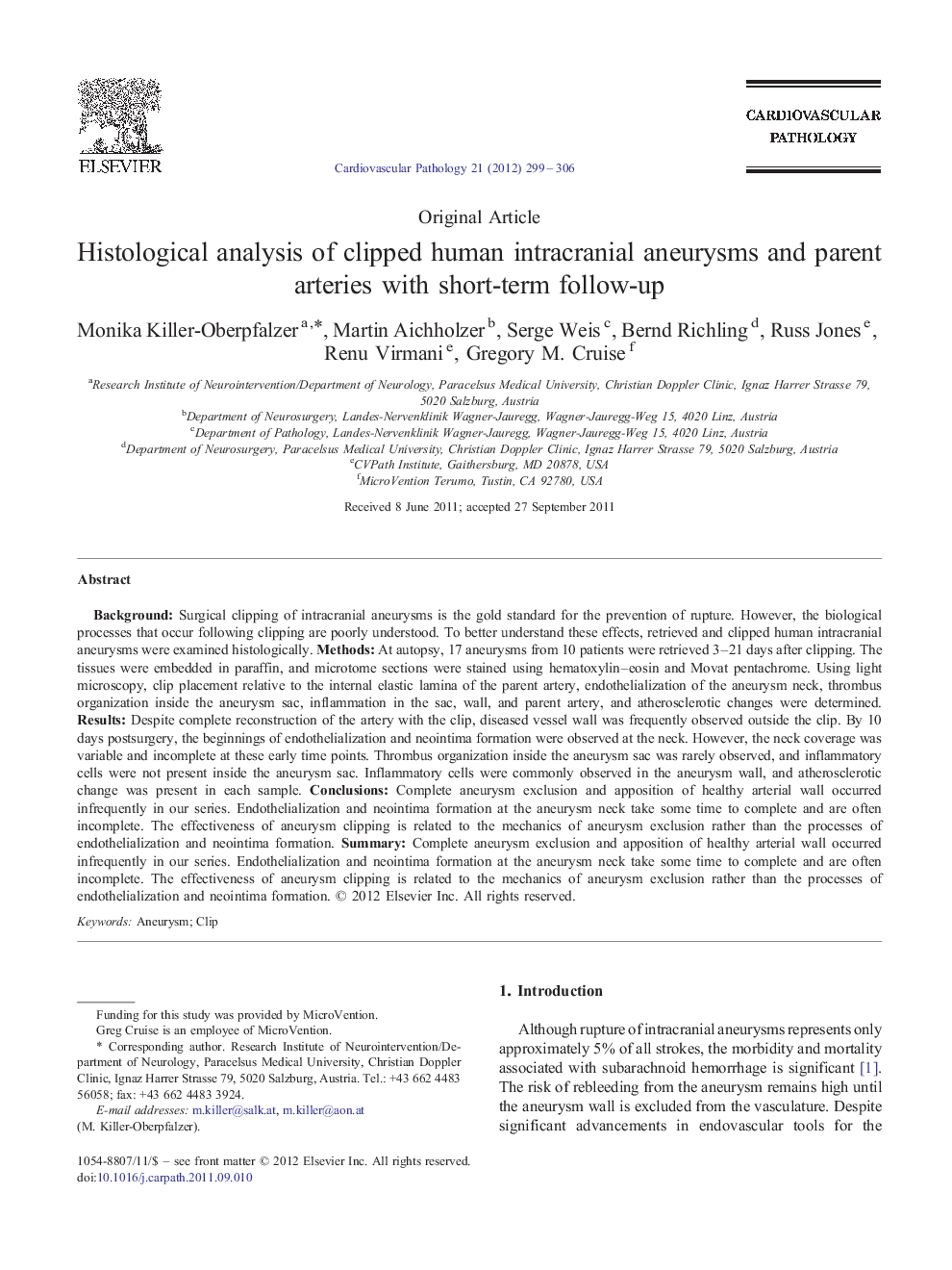| کد مقاله | کد نشریه | سال انتشار | مقاله انگلیسی | نسخه تمام متن |
|---|---|---|---|---|
| 5952024 | 1173125 | 2012 | 8 صفحه PDF | دانلود رایگان |

BackgroundSurgical clipping of intracranial aneurysms is the gold standard for the prevention of rupture. However, the biological processes that occur following clipping are poorly understood. To better understand these effects, retrieved and clipped human intracranial aneurysms were examined histologically.MethodsAt autopsy, 17 aneurysms from 10 patients were retrieved 3-21 days after clipping. The tissues were embedded in paraffin, and microtome sections were stained using hematoxylin-eosin and Movat pentachrome. Using light microscopy, clip placement relative to the internal elastic lamina of the parent artery, endothelialization of the aneurysm neck, thrombus organization inside the aneurysm sac, inflammation in the sac, wall, and parent artery, and atherosclerotic changes were determined.ResultsDespite complete reconstruction of the artery with the clip, diseased vessel wall was frequently observed outside the clip. By 10 days postsurgery, the beginnings of endothelialization and neointima formation were observed at the neck. However, the neck coverage was variable and incomplete at these early time points. Thrombus organization inside the aneurysm sac was rarely observed, and inflammatory cells were not present inside the aneurysm sac. Inflammatory cells were commonly observed in the aneurysm wall, and atherosclerotic change was present in each sample.ConclusionsComplete aneurysm exclusion and apposition of healthy arterial wall occurred infrequently in our series. Endothelialization and neointima formation at the aneurysm neck take some time to complete and are often incomplete. The effectiveness of aneurysm clipping is related to the mechanics of aneurysm exclusion rather than the processes of endothelialization and neointima formation.SummaryComplete aneurysm exclusion and apposition of healthy arterial wall occurred infrequently in our series. Endothelialization and neointima formation at the aneurysm neck take some time to complete and are often incomplete. The effectiveness of aneurysm clipping is related to the mechanics of aneurysm exclusion rather than the processes of endothelialization and neointima formation.
Journal: Cardiovascular Pathology - Volume 21, Issue 4, JulyâAugust 2012, Pages 299-306